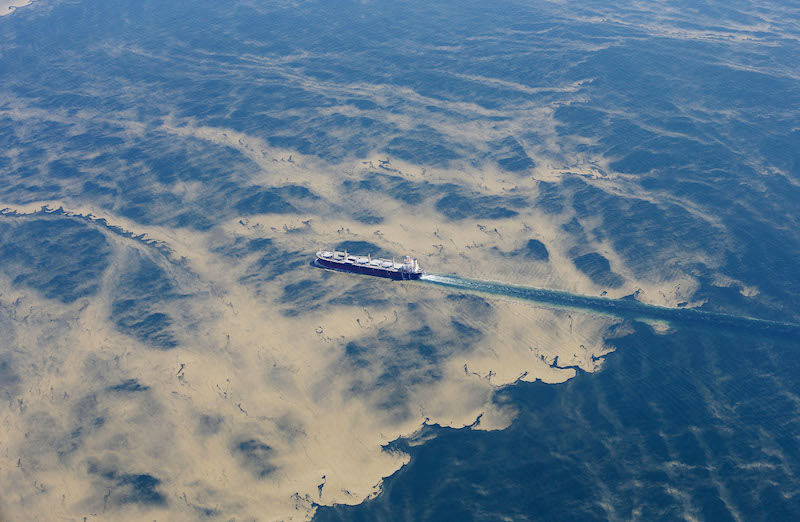
Automated systems for investigating phytoplankton diversity and abundance with a focus on harmful algae are used on research vessels, ferries and at fixed ocean observatories in the Baltic Sea, The Kattegat-Skagerrak, the North Sea-eastern English Channel area and in the Western Mediterranean Sea. Flow cytometry and bio-optical measuments are some of the methods used. A joint WP 2.4.2, WP3.1 and WP4.1 workshop was arranged in Wimereux 31 June – 2 June 2016 and a WP 4.1 Plankton Workshop will be held in 27 – 30 September in Gothenburg, Sweden.
Harmful algal bloom study at the Tångesund observatory
A study of plankton dynamics near a mussel farm at Tångesund on the Swedish Skagerrak coast will be carried out in August-October 2016. An instrumented oceanographic buoy was deployed already in April. One objective of the study is to investigate the coupling between physical processes and harmful algal blooms. The focus organisms are dinoflagellates belonging to the genus Dinophysis. These phytoplankton produce diarrhetic shellfish toxins that may accumulate in shellfish, posing a threat to human health. Other phytoplankton and also bacteria are being studied. The involved JERICO-NEXT partners are SMHI with subcontractors Scanfjord and WHOI (USA), NIVA, IRIS and Ifremer. In addition scientist from the University of Gothenburg, Sweden, and the AWI (Germany) will be involved. In connection with the study at the fixed location three cruises with a research vessel are planned. In addition, data from the Ferrybox system on Color Fantasy covering the route Oslo-Kiel will be used.
Study of phytoplankton in the western Mediterranean Sea
Phytoplankton functional diversity and spatio-temporal distribution at the meso-scale are studied in the frame of the A*MIDEX CHROME (Continuous High Resolution Observation of the Mediterranean, https://en-chrome.mio.univ-amu.fr/?page_id=42) project thanks to the combined installation of a Ferrybox system (belonging to the INSTM, Tunis) and a Cytosense flow cytometer on board the CTN’s ferry “Le Carthage”. The first trial was run end of April 2016 for one week and should run again before the end of 2016. By combining the phytoplankton datasets with oxygen, partial pressure of carbon dioxide and pH, the understanding of the phytoplankton functional diversity on biogeochemical processes at the basin scale will be improved.
Study of phytoplankton in the North Sea – eastern English Channel area
The phytoplankton are being studied using automated systems on research vessels, ferries, instrumented buoys (e.g. SMILE and Smartbuoys) and the MAREL Carnot instrumented Station. In 2016, regular cruises with R/V Endeavour around the Bristish Isles (North Sea and English Channel), R/V Sepia II (English Channel), R/V Simon Stevin and Zirfaea in the North Sea along the Belgian and Dutch coasts will be carried out. The following JERICO partners are involved: Cefas, VLIZ, RWS, CNRS-LOG and CNRS-Borea, Ifremer and Deltares. In addition subcontractors and partners outside JERICO such as University of Gent, NIOZ and ThomasRutten Projects.In parallel, work is still in progress (Ifremer-LER/BL) ) to develop user friendly interfaces (using R) in order to pre-process and process high frequency (HF) data series. At the time being, tools in test allow to merge files from different HF and LF (Low Frequency) data then allow to summarise statistics, to define clusters (based on biotic and/or abiotic parameters) and to make some modelling using Hybrid Markov Model. In collaboration with a partner outside JERICO such as ULCO-LISIC laboratory.
Cruises involving at least two JERICO-Next partners in the North Sea-eastern English Channel:
- Cruises of R/V Zirfaea (RWS):
11-14 April 2016: Phytoplankton study along the Dutch Coast and towards the Dogger Bank. Flowcytometry and FRRF in order to detect, follow and couple the phytoplankton composition and the productivity of the system. This involved the cooperation of RWS-NIOZ-VLIZ-University of Ghent
13-17 June 2016. Phytoplankton study along the Dutch Coast and towards the Dogger Bank. Flowcytometry, FytoPam and continuous Fluoroprobe in order to detect, follow and couple the phytoplankton composition and the productivity of the system. This involved the cooperation of RWS -CNRS -University of Lille
- Cruises of Cefas Endeavour (Cefas):
9-12 May 2016: Phytoplankton study on the East Coast of UK.
The Cytosense Flowcytometer on line with the Ferrybox during a short cruise (3 days) between North of Norfolk and the Tames Estuary chasing a Phaeocystis bloom.
20-29 June 2016: Comparison of outputs from two Flowcytometers from RWS and Cefas.
The two Flowcytometers will be on line with the Ferrybox during the Survey which aims to estimate the density of Nephrops in the North of the North Sea. The data from the two instruments will be compared to estimate their performances and will show that it is possible to combine phytoplankton measurement with other monitoring surveys.
- Cruise of RV Simon Stevin (late May 2016):
End of May 2016. Phytoplankton study in the North Sea (off Belgian coast). Coupling of two automated flow cytometer, FRRF, Fluoroprobe and PhytoPAM in order to follow both phytoplankton abundance, diversity and productivity. This will involve cooperation between Cefas, RWS, NIOZ, CNRS-LOG and U. Gent.
In parallel, work is still in progress (Ifremer-LER/BL, ULCO/LISIC) to develop user friendly interfaces (using R) in order to pre-process and process high frequency (HF) data series. At the time being, tools in test allow to merge files from different HF and LF (Low Frequency) data then allow to summarise statistics, to define clusters (based on biotic and/or abiotic parameters) and to make some modelling using Hybrid Markov Model.
